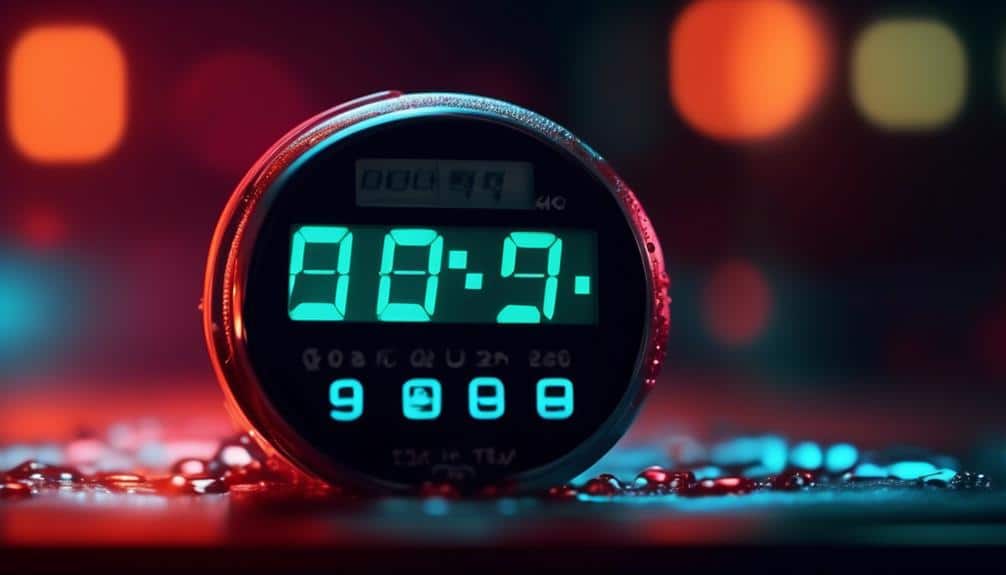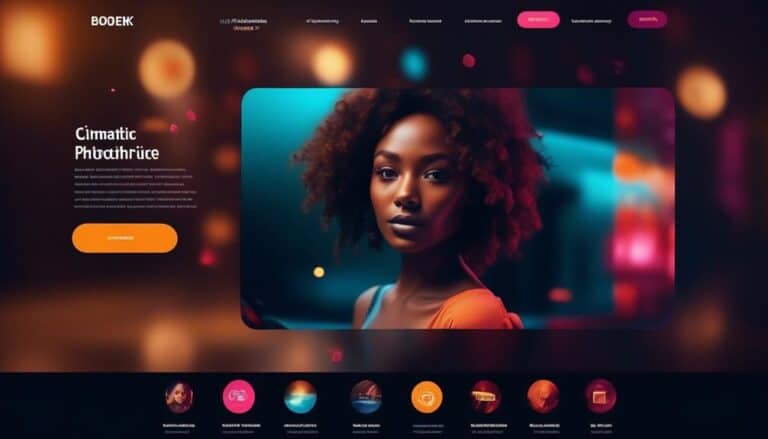Maximizing Clicks: The Science of Crafting Irresistible Calls-to-Action
Crafting an effective call-to-action is akin to an art form in the digital landscape.
You might have noticed that some CTAs seem to effortlessly compel you to take action, while others fall short of grabbing your attention.
What if there were specific strategies and subtle nuances that could significantly boost your click-through rates?
The answer lies in understanding the science behind creating irresistible calls-to-action that not only capture interest but drive meaningful engagement.
Key Takeaways
- Understanding user psychology is crucial for tailoring effective calls-to-action that align with preferences and drive engagement.
- A/B testing, especially with elements like color psychology and button placement, fine-tunes calls-to-action for maximum impact and conversion rates.
- Creating urgency through tactics like countdown timers and scarcity triggers fear of missing out, prompting immediate action from users.
- Continuous improvement based on data insights and dynamic adaptation of strategies are essential for maintaining a competitive edge and maximizing the impact of calls-to-action.
Understanding User Psychology

Have you ever wondered what drives users to take action when they interact with a website or an advertisement? Understanding user behavior and decision-making processes is crucial in crafting irresistible calls-to-action. By delving into the psychology of users, we can optimize our strategies to elicit the desired response.
User behavior is a complex interplay of cognitive processes, emotions, and past experiences. When users visit a website, they're constantly making split-second decisions based on various factors such as design, messaging, and ease of navigation. By analyzing these behaviors, we can tailor our calls-to-action to align with users' preferences and motivations.
Decision-making is heavily influenced by psychological triggers such as fear of missing out, social proof, and the desire for convenience. By tapping into these triggers, we can create compelling calls-to-action that prompt users to act. Understanding the intricacies of user psychology allows us to design more effective strategies that drive engagement and conversions.
Crafting Compelling Copy
Understanding user psychology equips you to craft compelling copy that resonates with your audience's emotions and drives them to take action. When it comes to crafting copy that truly captivates your audience, here are four key strategies to consider:
- Create an Emotional Appeal: Infuse your copy with emotion to connect on a deeper level with your audience. Trigger feelings of joy, excitement, or even nostalgia to evoke a strong emotional response.
- Use Persuasive Language: Employ words that persuade and influence your audience to act. Utilize strong verbs, power words, and compelling phrases that nudge readers towards taking the desired action.
- Tell a Story: Narratives have a unique way of engaging individuals. Craft a story within your copy that draws readers in, making them feel connected and invested in your message.
- Focus on Benefits: Highlight the benefits and outcomes your audience will experience by taking action. Clearly communicate how your product or service will improve their lives, sparking a desire to engage further.
Leveraging Visual Elements

Get ready to boost your conversion rates with the power of color psychology and strategic button placement!
By leveraging visual elements effectively, you can guide your audience's attention and prompt action.
Discover how these subtle yet impactful design choices can make a significant difference in driving engagement and achieving your goals.
Color Psychology
Leverage the power of color psychology to create compelling calls-to-action that drive action and engagement. Colors have the remarkable ability to evoke emotions and associations, making them a potent tool in influencing consumer behavior. To harness this power effectively, consider the following strategies:
- Red: Instills a sense of urgency and passion, ideal for prompting immediate action.
- Blue: Evokes trust and security, perfect for building a reliable brand association.
- Yellow: Radiates positivity and energy, encouraging feelings of optimism and happiness.
- Green: Represents growth and harmony, fostering a sense of balance and tranquility.
Button Placement
After understanding the impact of color psychology on consumer behavior, it's time to strategically position your buttons to maximize engagement and conversions.
Button placement is a critical aspect of optimizing conversion rates and influencing user behavior on your website. Research indicates that users are more inclined to click on buttons that are easily visible and strategically located within the layout. Placing buttons where users naturally expect to find them, such as at the end of compelling content or in the center of the screen, can significantly improve click-through rates.
Utilizing contrasting colors for buttons against the background can also draw attention and prompt action. By testing different placements and analyzing user interactions, you can fine-tune your button positioning to enhance user engagement and drive conversions effectively.
Implementing A/B Testing
You're on the verge of unlocking the secrets to boosting your conversion rates.
By testing button colors and comparing different copy variations, you can fine-tune your calls-to-action for maximum impact.
Embrace A/B testing to uncover which elements truly resonate with your audience and drive your desired outcomes.
Test Button Colors
To optimize the effectiveness of your calls-to-action, consider conducting A/B testing to determine the most compelling button colors for your audience's response. By testing different hues, you can uncover the perfect color that grabs attention and encourages clicks. Here's a list of emotional triggers to consider when testing button colors:
- Urgency: Use vibrant reds or oranges to create a sense of urgency.
- Trust: Blues and greens can convey trustworthiness and reliability.
- Excitement: Bright yellows or bold shades can evoke excitement and energy.
- Sophistication: Deep purples or elegant blacks can add a touch of sophistication to your CTA buttons.
Experiment with these colors to see which resonates best with your audience and drives the most clicks!
Compare Copy Variations
When exploring 'Compare Copy Variations' through A/B testing, you'll uncover invaluable insights into which messaging resonates most effectively with your audience's preferences and drives optimal engagement.
By analyzing different copy variations, you can determine which language prompts higher conversion rates and enhances overall copy effectiveness. A/B testing allows you to experiment with diverse wording, tones, and lengths to pinpoint the most compelling message for your audience.
This data-driven approach enables you to make informed decisions based on concrete results rather than assumptions. Harnessing the power of A/B testing in comparing copy variations empowers you to fine-tune your calls-to-action and maximize their impact.
Stay ahead of the curve by continuously refining your messaging to achieve higher conversion rates and amplify your copy effectiveness.
Creating a Sense of Urgency

Craft a compelling sense of urgency to drive action and engagement with your audience. To evoke an emotional response and encourage immediate action, consider the following tactics:
- Countdown Timers: Incorporate countdown timers to create a visual representation of urgency, signaling that time is running out.
- Scarcity Tactics: Use scarcity tactics to highlight limited availability or exclusive offers, triggering a fear of missing out and driving quick decisions.
- Emotional Triggers: Appeal to emotions such as excitement, anticipation, or even anxiety to prompt your audience to act swiftly.
- Fear of Missing Out: Tap into the fear of missing out by emphasizing the unique benefits or limited-time opportunities your call-to-action offers.
Optimizing Placement and Size
For optimal impact and visibility, strategically place and size your calls-to-action to capture your audience's attention effectively. The placement and size of your call-to-action can significantly influence click-through rates and conversions. Consider the following tips to enhance the effectiveness of your CTAs:
Font Styles and Button Shapes
| Font Styles | Button Shapes |
|---|---|
| Bold | Rounded |
| Italics | Square |
| Underline | Circular |
| All Caps | Pill-shaped |
| Serif | Custom |
Analyzing Data for Continuous Improvement

To truly maximize the impact of your calls-to-action, analyzing data for continuous improvement becomes the key to unlocking higher engagement and conversion rates. Data interpretation and performance analysis are the pillars on which your CTA strategy stands. Here are four compelling reasons why delving into your data is essential for ongoing success:
- Insightful Trends: Uncovering patterns through data interpretation allows you to capitalize on what works best for your audience, leading to more effective CTAs.
- Targeted Refinements: Performance analysis enables you to pinpoint areas of improvement, helping you refine your CTAs to resonate with your audience on a deeper level.
- Strategic Iterations: By analyzing data consistently, you can make informed decisions on how to tweak your CTAs for optimal performance, ensuring continual growth.
- Competitive Edge: Leveraging data insights gives you a competitive edge, allowing you to stay ahead of the curve and adapt your CTAs in real-time to meet evolving consumer needs.
Innovate by embracing data-driven decision-making to propel your CTA strategy to new heights.
Frequently Asked Questions
How Can Cultural Differences Impact the Effectiveness of a Call-To-Action?
In global marketing tactics, cross-cultural persuasion plays a vital role. Cultural differences can significantly impact the effectiveness of a call-to-action. Understanding diverse cultural norms and values allows you to craft more compelling and resonant messages.
What Role Does Brand Consistency Play in the Success of a Call-To-Action?
Brand messaging consistency builds trust and recognition, guiding target audiences to act. When your call-to-action aligns with your brand identity across platforms, it creates a seamless experience, enhancing engagement and conversion rates.
Is There a Specific Color Scheme That Is Proven to Increase Click-Through Rates?
When considering color schemes for your calls-to-action, remember that color psychology influences user behavior. A/B testing different colors can reveal which scheme converts best for your audience, ultimately increasing click-through rates and maximizing conversions.
How Can the Tone of a Call-To-Action Impact User Engagement?
When crafting a call-to-action, the tone plays a crucial role in sparking emotional appeal and influencing user response. Strategic linguistic framing can significantly impact conversion rates, driving engagement and ultimately boosting click-through and conversion metrics.
Are There Any Ethical Considerations to Keep in Mind When Crafting a Call-To-Action?
When crafting a call-to-action, it's crucial to consider ethical boundaries. Balancing persuasive techniques with consumer trust is key. Avoid manipulative marketing tactics to maintain integrity. Your approach will enhance engagement and build lasting relationships.
Conclusion
You now have the tools to create irresistible calls-to-action that drive clicks and conversions. By understanding user psychology, crafting compelling copy, leveraging visual elements, implementing A/B testing, creating urgency, optimizing placement and size, and analyzing data for continuous improvement, you can maximize your website's performance.
Don't miss out on this opportunity to skyrocket your click-through rates and achieve your goals. Start implementing these strategies today and watch your results soar!








